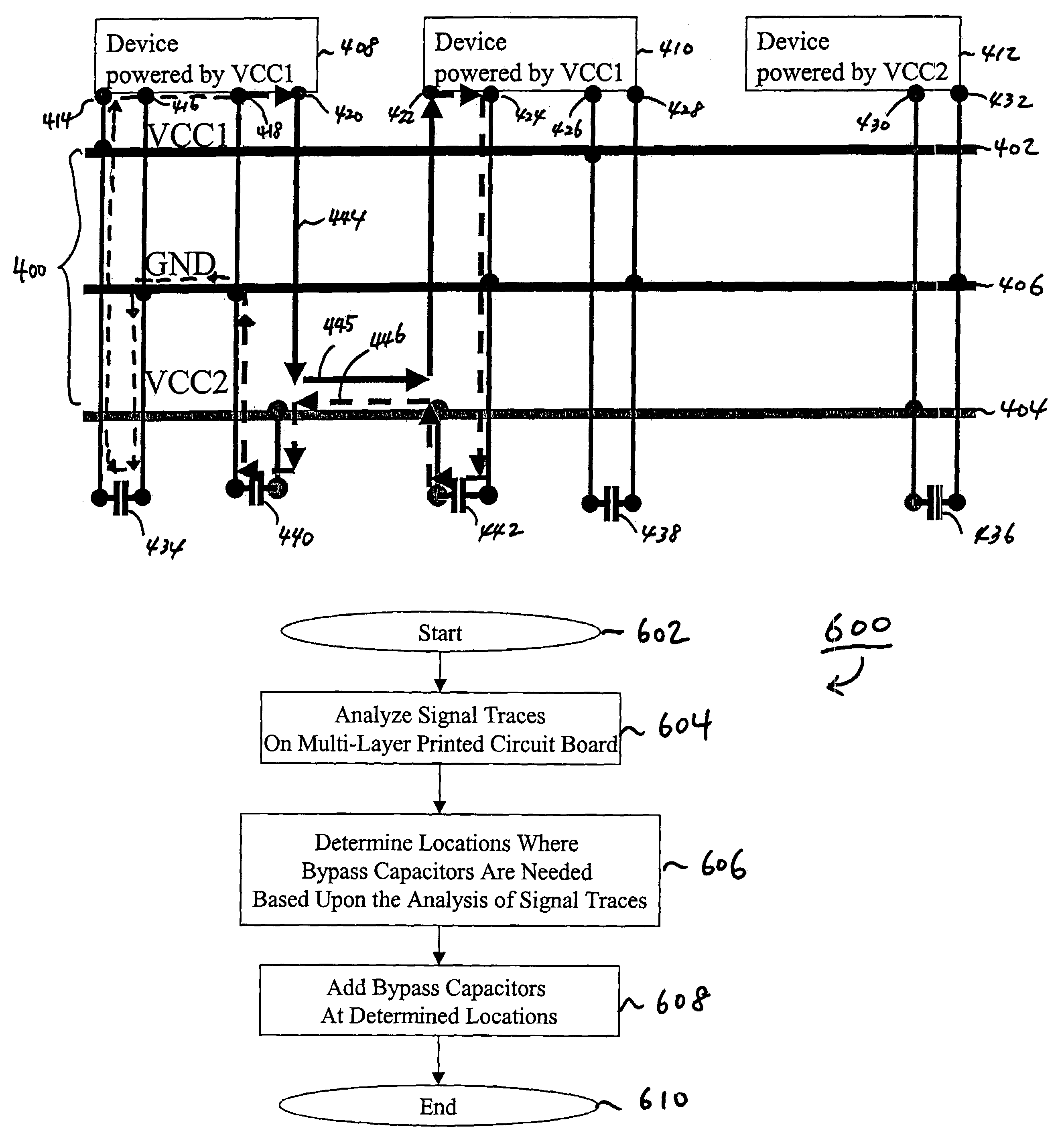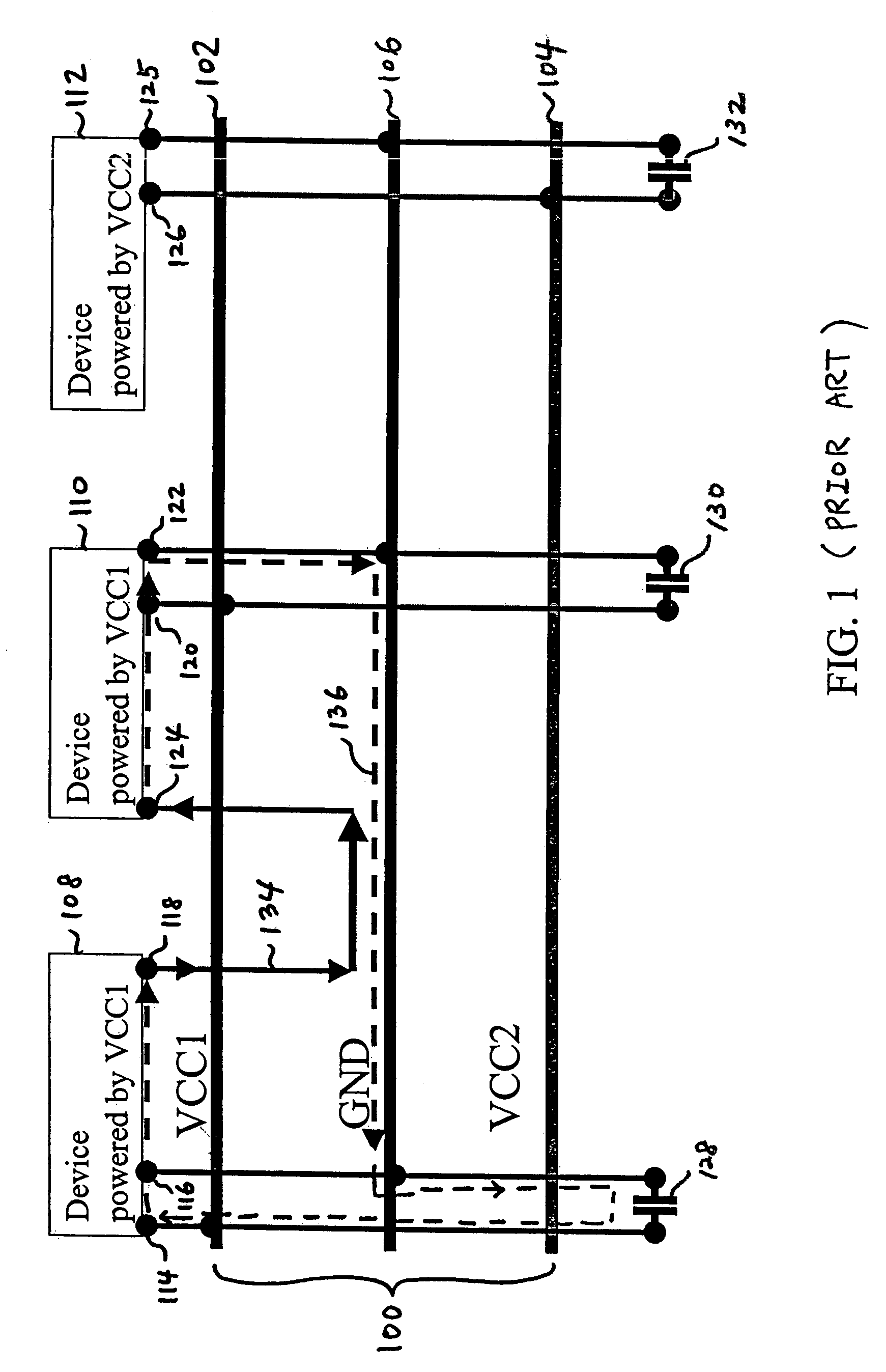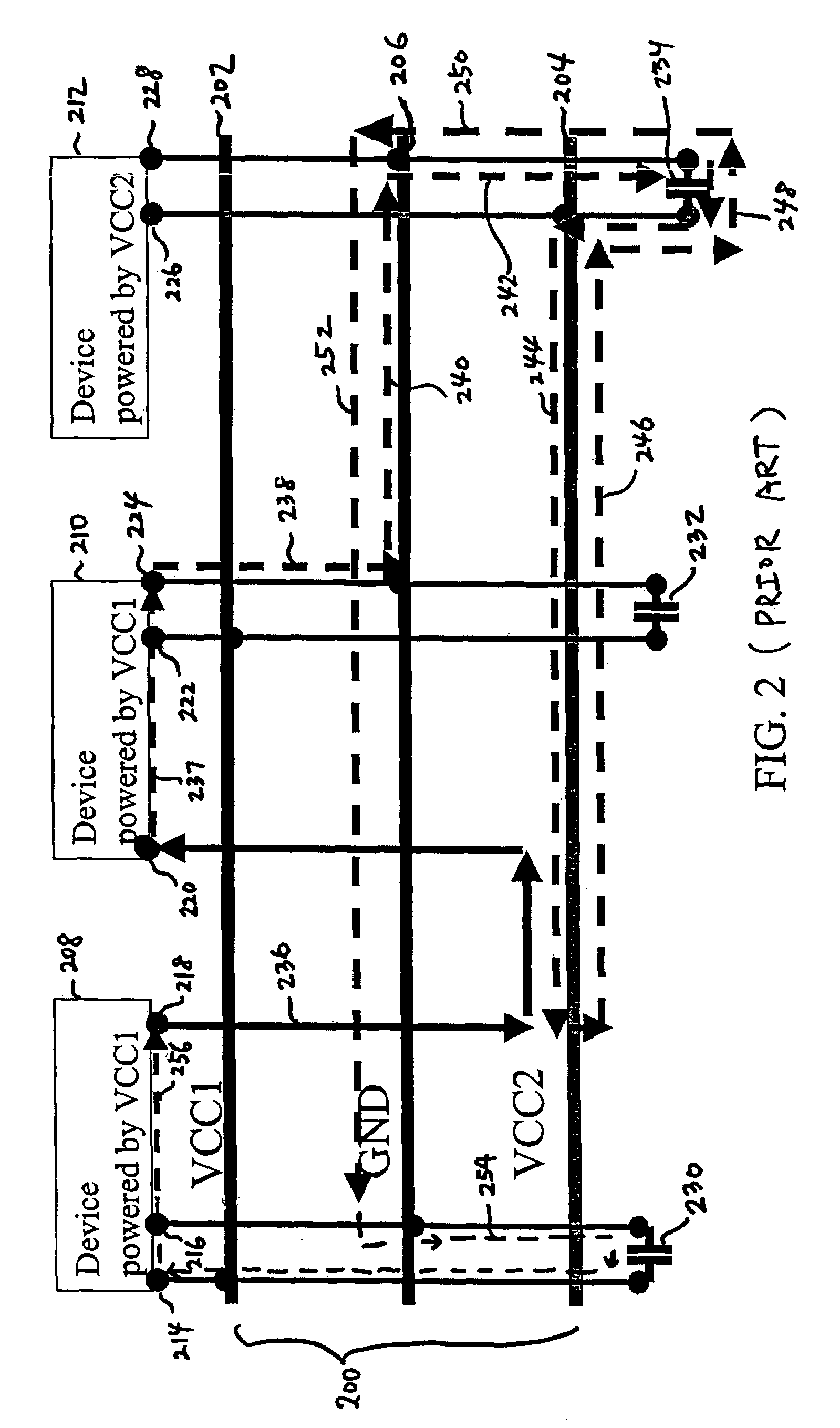Method for selecting and placing bypass capacitors on multi-layer printed circuit boards
a multi-layer printed circuit board and bypass capacitor technology, applied in cross-talk/noise/interference reduction, program control, instruments, etc., can solve the problems of electronic components generating an increasing level of noise, the purpose of controlling high-frequency transient noise is limited, and the electronic circuit becomes more complex. , to achieve the effect of signal transmission line reflection and noise control
- Summary
- Abstract
- Description
- Claims
- Application Information
AI Technical Summary
Benefits of technology
Problems solved by technology
Method used
Image
Examples
first embodiment
[0036]FIG. 4 is a diagram illustrating a multi-layer printed circuit board 400 in accordance with the present invention. The printed circuit board 400 shown in FIG. 4 is different from the conventional printed circuit board 200 shown in FIG. 2 in that additional bypass capacitors 440 and 442 were added. The printed circuit board 400 includes four layers, a Vcc1 supply voltage plane 402, a Vcc2 supply voltage plane 404, a GND plane 406 with conventional local decoupling capacitors 434, 436, 438, and a routing layer in which the signal current 445 flows. Two active devices, device 408 (driver part), device 410 (receiver part), and another active device 412 (unrelated to devices 408 and 410) are shown placed on the printed circuit board 400. The devices 408, 410, 412 may be any type of device such as an active integrated circuit (IC) chip or a discrete component. Device 408 has at least four pins 414, 416, 418, 420, device 410 has at least four pins 422, 424, 426, 428, and device 412 h...
second embodiment
[0042]FIG. 5 is a diagram illustrating a multi-layer printed circuit board 500 according to the present invention. The printed circuit board 500 of the present invention shown in FIG. 5 is different from the conventional printed circuit board 300 shown in FIG. 3 in that additional bypass capacitors 534, 536, 538, 540 according to the present invention were added. The printed circuit board 500 includes six layers, a Vcc1 supply voltage plane 502, a Vcc2 supply voltage plane 506, and a first GND plane 504, a second GND plane 508 with conventional local decoupling capacitors 530, 532, and two routing layers in which the signal currents 541, 542, 543 flows. Two active devices, device 510 (driver part) and device 512 (receiver part) are placed on the printed circuit board 500. The devices 510, 512 may be any type of device such as an integrated circuit (IC) chip or a discrete component. Device 510 has at least four pins 514, 516, 518, 520, and device 512 has at least four pins 522, 524, ...
PUM
 Login to View More
Login to View More Abstract
Description
Claims
Application Information
 Login to View More
Login to View More - R&D
- Intellectual Property
- Life Sciences
- Materials
- Tech Scout
- Unparalleled Data Quality
- Higher Quality Content
- 60% Fewer Hallucinations
Browse by: Latest US Patents, China's latest patents, Technical Efficacy Thesaurus, Application Domain, Technology Topic, Popular Technical Reports.
© 2025 PatSnap. All rights reserved.Legal|Privacy policy|Modern Slavery Act Transparency Statement|Sitemap|About US| Contact US: help@patsnap.com



